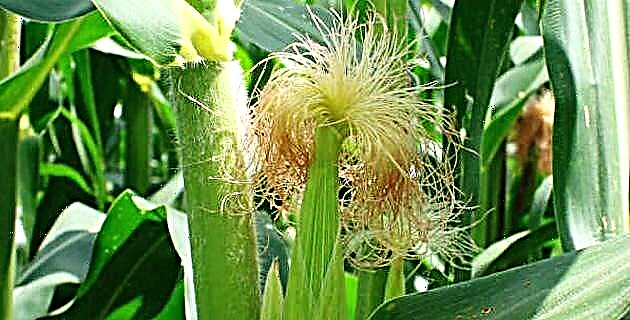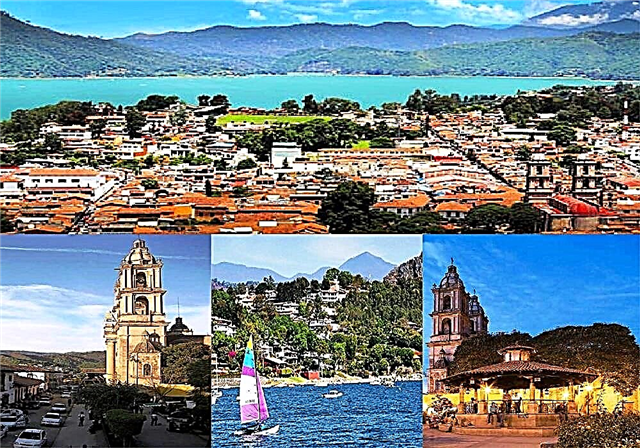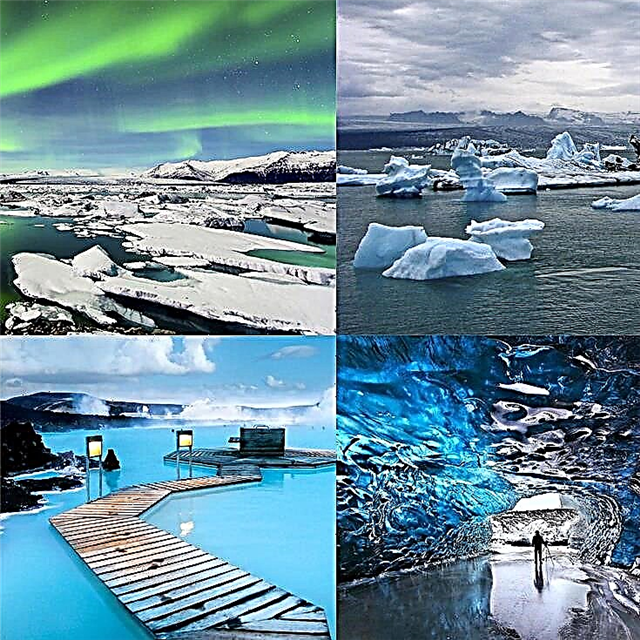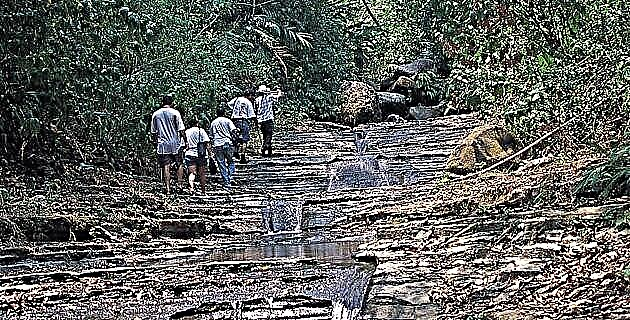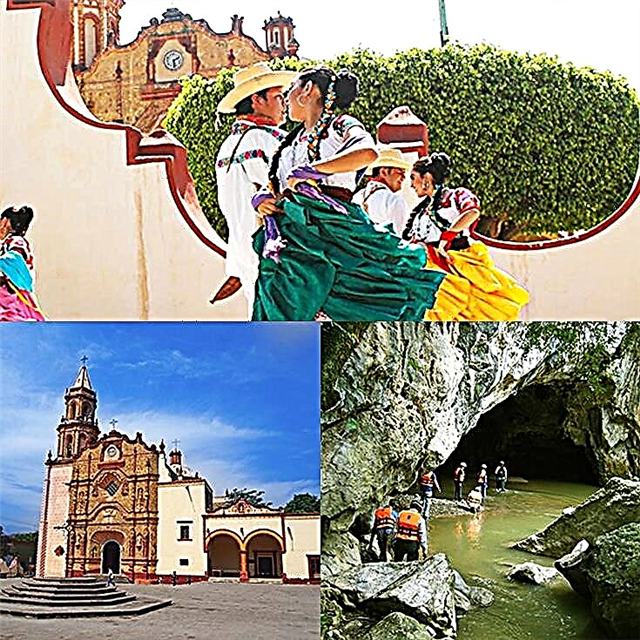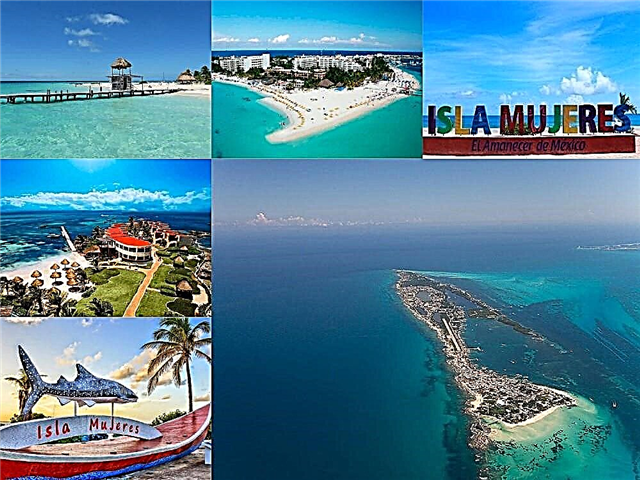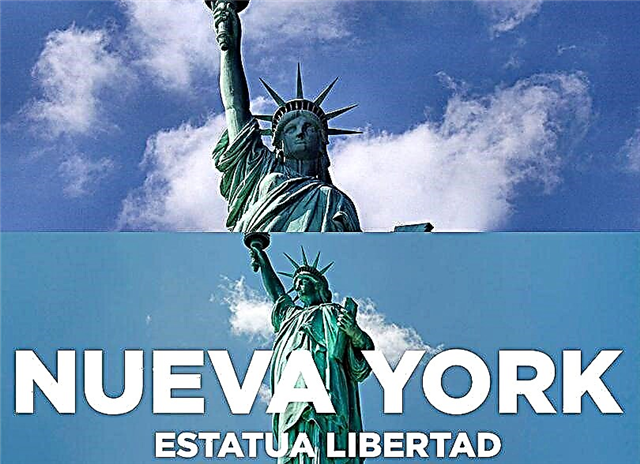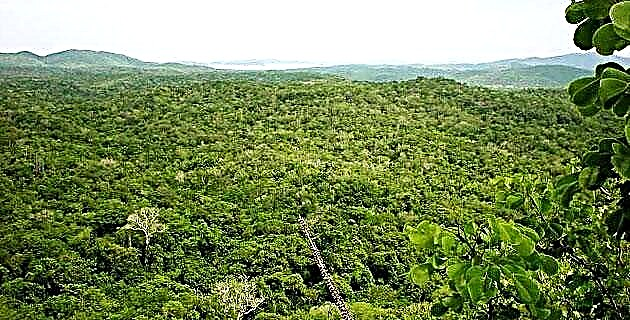
Along the western coast of Mexico, from southern Sonora to the Chiapas border with Guatemala, it is possible to appreciate a very similar landscape that, depending on the time of year in which it is observed, will appear either very exuberant or extremely desolate.
It is about the low deciduous forest, one of the most diverse and contrasting ecosystems that exist in our country. It is named in this way because its average height is "low" (around 15 m.) In comparison with other forests, and because in the approximately seven months that the dry season lasts, most of its trees and shrubs, like a adaptation to the extreme climatic conditions of the season (high temperatures and almost total absence of atmospheric humidity), they lose their leaves completely (deciduous = leaves that expire), leaving only “dry rods” as landscape. On the other hand, during the rainy months the jungle undergoes a total transformation, since the plants react immediately to the first drops, covering themselves with new leaves that bring an intense green to the landscape while there is humidity.
Landscape in constant transformation
In 1988 the UNAM and the Fundación Ecológica de Cuixmala, A.C., began studies on the southern coast of the state of Jalisco that allowed them to successfully propose the establishment of a reserve in order to protect the low deciduous forest. Thus, on December 30, 1993, the creation of the Chamela-Cuixmala Biosphere Reserve was decreed, to protect an area of 13,142 hectares that, for the most part, are covered by this type of forest. Located more or less halfway between Manzanillo, Colima, and Puerto Vallarta, Jalisco, this reserve is an extensive area covered with vegetation from the coast to the top of several of the highest hills in this region; the Chamela stream and the Cuitzmala river mark its northern and southern limits, respectively.
Its climate is typically tropical, with an average temperature of 25 ° C and a rainfall of between 750 and 1,000 mm of rain. The annual cycle in this reserve and in the other regions of the country where the low forest is distributed, passes between the abundance of the rainy season and an acute scarcity during the drought; In addition, it has allowed multiple adaptations in plants and animals that, to survive here, have modified their appearance, behavior and even physiology.
At the beginning of November, the dry season begins. At this time the plants are still covered with leaves; Water runs through practically all the streams, and the pools and ponds that formed during the rains are also full.
A few months later, only in the Cuitzmala river - the only permanent river in the reserve - will it be possible to find water for many kilometers around; even so, its flow is considerably reduced at this time, sometimes becoming a sequence of small pools. Little by little, the leaves of most plants begin to dry out and fall, covering the ground with a carpet that, paradoxically, will allow their roots to retain moisture for a while longer.
At this moment the aspect of the jungle is sad and bleak, suggesting the almost total absence of life in the region; However, surprising as it may seem, life overflows in this place, because during the early hours of the morning and at dusk the animals increase their activity. In the same way, plants, which at first glance appear to be dead, are developing their metabolism in a less “apparent” way, through strategies that they have used over thousands of years of adaptation to the harsh conditions of this place.
Between June and November, in the rainy season, the appearance of the forest is transformed into total exuberance, since the constant presence of water allows all the plants to be covered with new leaves. At this time many animal species increase their activity during the day.
But in this reserve, not only does the low deciduous forest exist, but also seven other types of vegetation have been identified: the medium sub-evergreen forest, the mangrove, the xerophilous scrub, the palm grove, the reed bed, the chamomile range and the riparian vegetation; These environments are of great importance for the survival of many animals at different times of the year.
Shelter of plants and animals
Thanks to this environmental heterogeneity, and as surprising as it may seem for a region with such extreme conditions, the diversity of flora and fauna that can be found in the Chamela-Cuixmala Biosphere Reserve is extraordinary. Here 72 species of mammals have been registered, 27 of them exclusively Mexican (endemic); 270 species of birds (36 endemic); 66 reptiles (32 endemic) and 19 amphibians (10 endemic), in addition to a large number of invertebrates, mainly insects. The existence of around 1,200 species of plants has also been estimated, of which a high percentage are endemic.
Many of these plants and animals are typical of the region, as is the case of the trees known as “primroses” (Tabebuia donell-smithi), which during the drought -when they bloom- color the arid landscape with brushstrokes of yellow, characteristic of its flowers. Other trees are the iguanero (Caesalpinia eriostachys), the cuastecomate (Crescentia alata) and the papelillo (Jatropha sp.). The first is easily recognized because its trunk grows, forming large cracks in its bark, which are used as a refuge by iguanas and other animals. The cuastecomate produces on its trunk large round green fruits that have an extremely hard shell.
Regarding the fauna, Chamela-Cuixmala is an area of great importance, since it has become a “refuge” for many species that have disappeared from other regions or that are increasingly rare. For example, the river crocodile (Crocodilus acutus), which is the largest reptile in Mexico (it can measure up to 5 m in length) and which, due to the intense persecution it has been subjected to (to illegally use its skin to fur) and the destruction of its habitat, has disappeared from most of the rivers and lagoons of the western coast of the country, where it was once very abundant.
Other outstanding reptiles of the reserve are the "scorpion" or beaded lizard (Heloderma horridum), one of the two poisonous lizard species in the world; the liana (Oxybelis aeneus), a very thin snake that is easily confused with dry branches; the green iguanas (Iguana iguana) and black (Ctenosaura pectinata), the boa (Boa constrictor), the tropical tapayaxin or false chameleon (Phrynosoma asio) and many other species of lizards, snakes and turtles; Of the latter, there are three terrestrial species and five sea turtles spawn on the beaches of the reserve.
Along with reptiles, several species of frogs and toads make up the herpetofauna of Chamela-Cuixmala, although during the dry season most of the species remain hidden among the vegetation or buried, trying to escape the high temperatures of the day and the absence of moisture. Some of these amphibians are typical of the jungle in rainy weather, when they come out of their shelters to take advantage of the presence of water to reproduce and lay their eggs in ponds and streams, where their "multitudinous" love choruses are heard at night. Such is the case of the “duck-billed” frog (Triprion spatulatus), an endemic species that takes refuge among the rosette leaves of bromeliads (“epiphytic” plants that grow on the trunks and branches of other trees); This frog has a flattened head and a long lip, which gives it - as its name implies - a "duck" appearance. We can also find the marine toad (Bufo marinus), the largest in Mexico; the flat frog (Pternohyla fodiens), several species of tree frogs and the green frog (Pachymedusa dacnicolor), endemic to our country and with which it is illegally trafficked on a large scale, due to its attractiveness as a “pet”.
Birds are the most numerous group of vertebrates in the reserve, since many species inhabit it temporarily or permanently. Among the most showy are the white ibis (Eudocimus albus), the roseate spoonbill (Ajaia ajaja), the American stork (Mycteria americana), the chachalacas (Ortalis poliocephala), the red-crested woodpecker (Driocopus lineatus), the coa o yellow trogon (Trogon citreolus) and the cowboy guaco (Herpetotheres cachinnans), to name a few. It is also an area of great importance for migratory birds, who arrive each winter from distant parts of Mexico and the western United States and Canada. During this time, it is possible to see many birds in the jungle and several aquatic species in the lagoons and in the Cuitzmala River, among which are several ducks and the white pelican (Pelecanus erythrorhynchos).
Similar to the case of crocodiles, some species of parrots and parakeets have found refuge in the reserve, which in other parts of the country have been illegally captured in large quantities to supply the national and international demand for exotic “pets”. Among those that can be found in Chamela-Cuixmala is the guayabero parrot (Amazona finschi), endemic to Mexico, and the yellow-headed parrot (Amazona oratrix), in danger of extinction in our country. The atolero parakeet (Aratinga canicularis) to the green parakeet (Aratinga holochlora) and the smallest in Mexico: the “catarinita” parakeet (Forpus cyanopygius), also endemic and in danger of extinction.
Finally, there are various species of mammals such as coatis or badgers (Nasua nasua), which can be seen in large groups at any time, also the collared peccary (Tayassu tajacu), a type of wild pig that roams the jungle in herds, particularly in the less hot hours. The white-tailed deer (Odocoileus virginianus), widely persecuted in other regions of the country, is abundant in Chamela-Cuixmala and can be seen at any time of the day.
Other mammals, due to their habits or rarity, are more difficult to observe; as is the case of the nocturnal “tlacuachín” (Marmosa canescens), the smallest of the Mexican marsupials and endemic to our country; the pygmy skunk (Spilogale pygmaea), also endemic to Mexico, the ghost bat (Diclidurus albus), extremely rare in our country and the jaguar (Panthera onca), the largest feline in America, in danger of extinction due to the destruction of the ecosystems it inhabits and why it has been overhunted.
The population of this reserve is one of the few viable on the Pacific coast (currently only individuals and small isolated groups remain throughout its original range) and perhaps the only one that enjoys full protection.
History of will and perseverance
The immediate appreciation of the majority of the people around the deciduous forest has been very poor and for this reason they are considered simply as a “mountain” that is susceptible to be eliminated, to induce traditional crops or pastures for livestock on these lands, which present a stunted and ephemeral performance, because unlike the native vegetation, they are composed of plants that are not adapted to the extreme conditions that prevail here. For this and other reasons, this ecosystem is being rapidly destroyed.
Aware of this situation and that the conservation of Mexican ecosystems is an imperative need to ensure our own survival, the Fundación Ecológica de Cuixmala, A.C., since its inception has been dedicated to promoting the conservation of the Chamela-Cuixmala area.
Of course, the task has not been easy because, as in many other regions of Mexico where there has been an attempt to establish natural reserves, they have run into the misunderstanding of some of the local inhabitants and powerful economic interests that have had in this area " in the sights ”for a long time, particularly for its“ development ”through large tourism mega-projects.
The Chamela-Cuixmala reserve has become a model of organization and perseverance to follow. With the participation of the owners of the properties where it is located and with the contributions collected by the Ecological Foundation of Cuixmala, it has been possible to maintain strict surveillance in the area. The entrances to the roads that enter the reserve have guard booths that operate 24 hours a day; In addition, the guards make several tours on horseback or by truck throughout the reserve daily, thus discouraging the entry of poachers who previously hunted or captured animals in this area.
Research carried out in the Chamela-Cuixmala reserve has confirmed the biological importance of the area and the need to expand its conservation, so there are future plans to extend its limits and try to unite it, through biological corridors, to another reserve. nearby: Manantlán. Unfortunately, in this country of great biological wealth, there is a huge lack of understanding of the importance of conserving species and ecosystems, which is leading to the accelerated disappearance of much of this wealth. That is why cases such as the Chamela-Cuixmala Biosphere Reserve cannot but be applauded and supported, hoping that they will serve as an example to motivate the struggle of people and institutions that aspire to achieve the conservation of representative areas of the great heritage natural Mexican.
Source: Unknown Mexico No. 241

